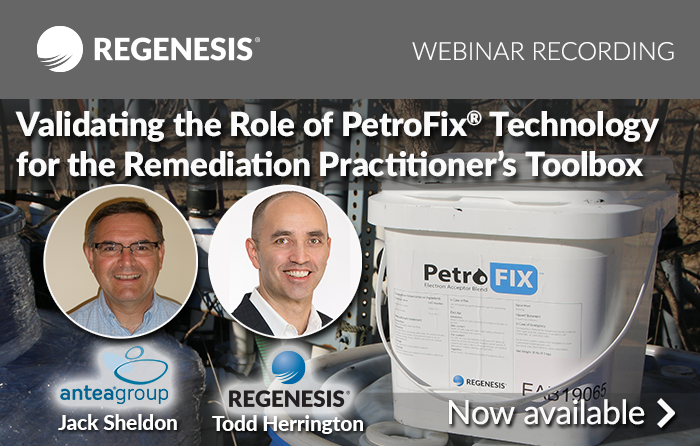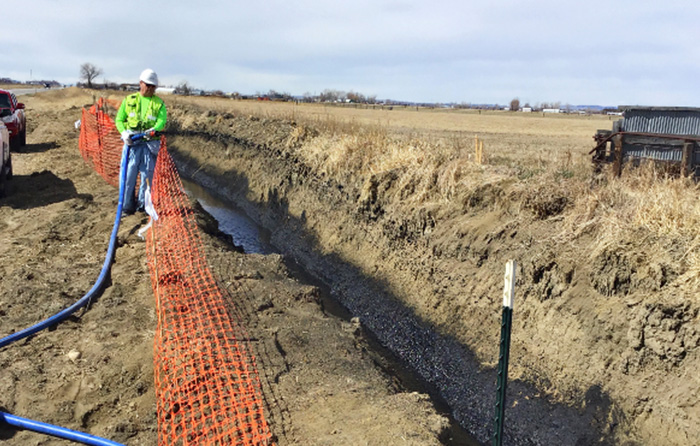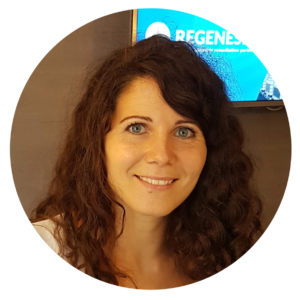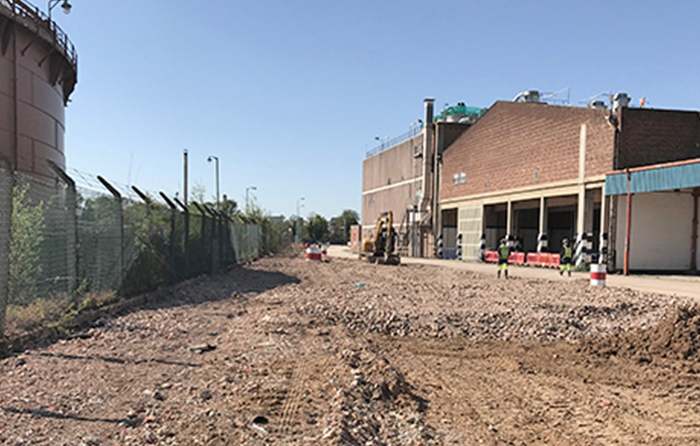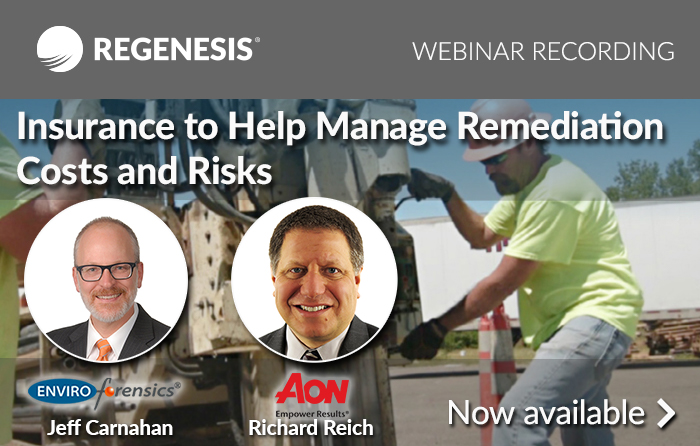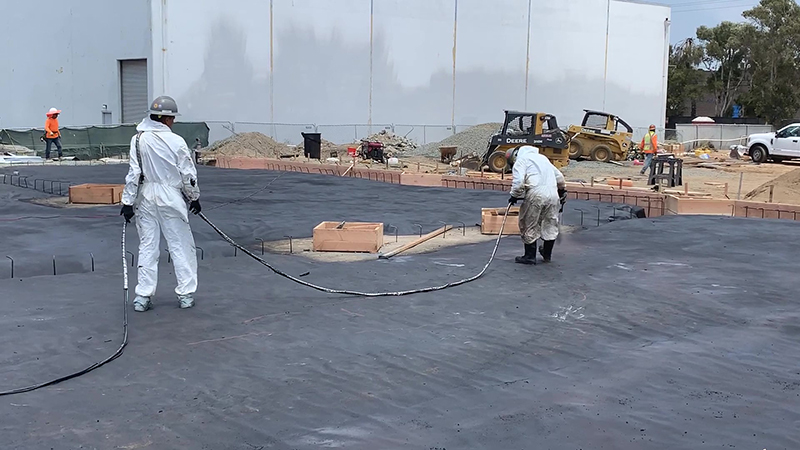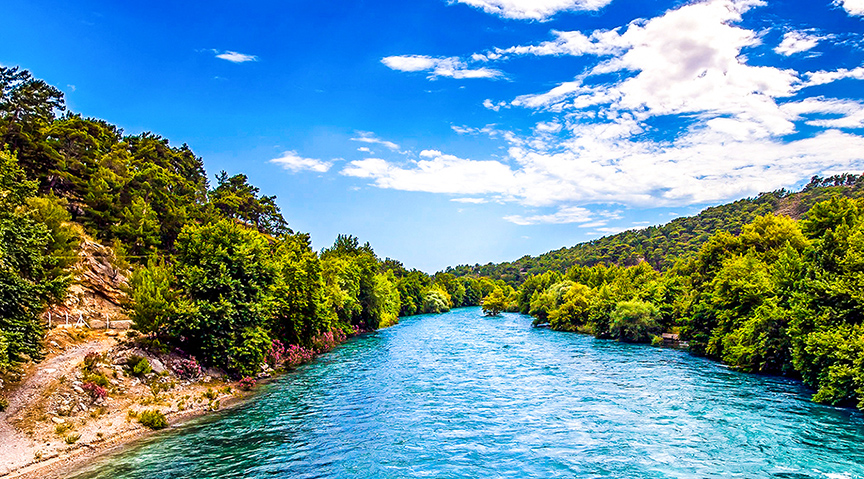Validating the Role of PetroFix Technology for the Remediation Practitioner’s Toolbox
In this webinar we were pleased to have a special presentation by Jack Sheldon, Senior Remediation Specialist at Antea Group (US). His presentation discussed validating the role of PetroFix®technology for the remediation practitioner’s toolbox. He was joined by Todd Herrington, Global PetroFix Product Manager at REGENESIS.
Case studies featured in this webinar include:
- An excavation/ PetroFix combination that led to site closure at a convenience store
- A small PetroFix injection grid that polished a site to attain closure
- A complex site with numerous groundwater constituents where remediation has been ongoing for more than two decades where PetroFix is now advancing the remediation effort
- A low concentration BTEX site where a PetroFix injection grid polished a site to attain closure
The application of in-situ sorption technologies for the remediation of organic contaminants in groundwater has become an important addition to the many remediation options available for site cleanup. A variety of commercial products are available and most incorporate electron acceptors or other amendments to bind contaminants while stimulating biodegradation processes. The PetroFix dual functioning carbon solution technology has established its own unique place in injection grids, barriers, and as an excavation amendment for polishing petroleum hydrocarbon sites. The technology is convenient to apply, has an ideal particle size to maximize sorption, and has an electron acceptor package that optimizes biodegradation.
This webinar will highlight the important role of the nitrate/sulfate electron acceptor package plays in the performance of the PetroFix technology. Four case studies will also be presented that look at application techniques, site chemistry changes, microbial profiles, and lessons learned.
Webinar recording available
PetroFix – Pretrattamento del letto di posa di serbatoi e tubazioni per prevenire impatti futuri
Presentato da: Ing. Mariangela Donati, Mediterranean District Manager
Nel terzo e ultimo webinar della serie “Nuove opzioni di trattamento per i siti contaminati da idrocarburi”, Mariangela Donati illustra come il PetroFix®viene utilizzato per rivestire a scopo preventivo il materiale di riempimento utilizzato nelle trincee di scavo per alloggiare corridoi di sottoservizi e intorno a serbatoi di stoccaggio interrati o fuori terra. Tale strategia crea un filtro sotterraneo a base di carbone attivo per ridurre l’impatto di perdite future, minimizzare la mobilizzazione e inibire la formazione di vapori. Questo approccio è ampiamente applicabile su stazioni di servizio carburante, depositi di idrocarburi, oleodotti e siti industriali.
Questo webinar approfondisce i seguenti aspetti:
- Praticità di applicazione in forma spray o tramite iniezione
- Meccanismi di trattamento del PetroFix
- Esempi di pretrattamento di serbatoi interrati e di trincee di alloggiamento sottoservizi per prevenire fenomeni di contaminazione
- Limitazioni d’uso
Alla fine del webinar è presente un’ampia sessione Q&A (domande e risposte) in cui viene data risposta alle domande poste dai partecipanti.
Presentato da:
Ing. Mariangela Donati
Mediterranean District Manager, REGENESIS
L’ing. Donati, District Manager di REGENESIS per l’Italia, la Francia e altri paesi del Sud Europa, supporta i clienti nella selezione, nel dimensionamento e nella valutazione economica degli interventi di bonifica mediante le diverse tecnologie REGENESIS disponibili. L’Ing. Donati ha svolto i suoi studi all’Università di Bologna, dove ha conseguito nel 2014 una laurea magistrale in Ingegneria per l’Ambiente e il Territorio, avendo partecipato allo sviluppo di uno studio in ambito di statistica e geostatistica applicate alle concentrazioni di nitrati in acque superficiali presso l’École des Mines de Paris (Francia). Ha maturato successivamente esperienze lavorative pluriennali sia in Italia che all’estero nei settori ambientale, minerario, di geostatistica e di gestione dei siti contaminati nelle diverse fasi previste dagli iter procedurali.
Guarda la registrazione webinar:
Barriere permeabili reattive iniettabili con PetroFix: una soluzione rapida, semplice e sicura
Presentato da: Ing. Mariangela Donati, Mediterranean District Manager
In questo secondo webinar della nostra serie “Nuove opzioni di trattamento per i siti contaminati da idrocarburi”, osserviamo più da vicino come PetroFix viene utilizzato per realizzare barriere reattive permeabili iniettabili (I-PRB). Questa strategia di bonifica viene utilizzata per prevenire la migrazione di contaminanti all’esterno del sito in aree industriali dismesse, aree in fase di ri-conversione e costruzione e siti industriali attivi. In tutta Europa, ad oggi è stato installato oltre un chilometro di I-PRB utilizzando PetroFix. Mariangela Donati illustra perché le società ambientali e quelle di costruzioni trovano particolare interesse nel sostituire opere di contenimento fisico o altri interventi complessi con questo semplice approccio.
Punti chiave che sono approfonditi in questo webinar:
- In che modo le I-PRB con PetroFix riducono la responsabilità off-site
- Le attività di indagine sul sito utili per installare una I-PRB efficace
- Metodi di iniezione e installazione
- Vantaggi dell’uso delle I-PRB sui costi e sul cronoprogramma dei lavori
- Esempi di installazioni in situ
Alla fine del webinar è presente un’ampia sessione Q&A (domande e risposte) in cui viene data risposta alle domande poste dai partecipanti.
Presentato da:
Ing. Mariangela Donati
Mediterranean District Manager, REGENESIS
L’ing. Donati, District Manager di REGENESIS per l’Italia, la Francia e altri paesi del Sud Europa, supporta i clienti nella selezione, nel dimensionamento e nella valutazione economica degli interventi di bonifica mediante le diverse tecnologie REGENESIS disponibili. L’Ing. Donati ha svolto i suoi studi all’Università di Bologna, dove ha conseguito nel 2014 una laurea magistrale in Ingegneria per l’Ambiente e il Territorio, avendo partecipato allo sviluppo di uno studio in ambito di statistica e geostatistica applicate alle concentrazioni di nitrati in acque superficiali presso l’École des Mines de Paris (Francia). Ha maturato successivamente esperienze lavorative pluriennali sia in Italia che all’estero nei settori ambientale, minerario, di geostatistica e di gestione dei siti contaminati nelle diverse fasi previste dagli iter procedurali.
Guarda la registrazione:
Interventi con PetroFix a seguito di pronto intervento ambientale per spill di idrocarburi
Presentato da: Ing. Mariangela Donati, Mediterranean District Manager
Questo è il primo webinar di una breve serie dal titolo: “Nuove opzioni di trattamento per i siti contaminati da idrocarburi”. Questo webinar si concentra sull’uso di PetroFix come parte integrante o successiva di un programma di pronto intervento ambientale a seguito di spill o fuoriuscite di idrocarburi. La presentatrice Mariangela Donati introduce i processi di trattamento utilizzati dal PetroFix, e discute le modalità di applicazione, fornendo inoltre esempi di siti in cui società ambientali o di pronto intervento hanno utilizzato il PetroFix come parte integrante di una strategia proattiva a seguito di eventi accidentali.
PetroFix viene utilizzato per limitare immediatamente la capacità della contaminazione in fase disciolta di impattare proprietà poste a valle, gestire la massa residua di contaminante, prevenire problemi di intrusione vapori sotto edifici e ridurre al minimo o evitare future attività di bonifica sul lungo termine.
Punti chiave che sono approfonditi in questo webinar:
- I meccanismi di trattamento alla base del PetroFix
- Indicazioni operative per l’applicazione e la miscelazione
- Dove e in che modo PetroFix può integrarsi nelle attività ambientali da eseguire a seguito di un evento accidentale
- Limitazioni d’uso
Alla fine del webinar è presente un’ampia sessione Q&A (domande e risposte) in cui viene data risposta alle domande poste dai partecipanti.
Presentato da:
Ing. Mariangela Donati
Mediterranean District Manager, REGENESIS
L’ing. Donati, District Manager di REGENESIS per l’Italia, la Francia e altri paesi del Sud Europa, supporta i clienti nella selezione, nel dimensionamento e nella valutazione economica degli interventi di bonifica mediante le diverse tecnologie REGENESIS disponibili. L’Ing. Donati ha svolto i suoi studi all’Università di Bologna, dove ha conseguito nel 2014 una laurea magistrale in Ingegneria per l’Ambiente e il Territorio, avendo partecipato allo sviluppo di uno studio in ambito di statistica e geostatistica applicate alle concentrazioni di nitrati in acque superficiali presso l’École des Mines de Paris (Francia). Ha maturato successivamente esperienze lavorative pluriennali sia in Italia che all’estero nei settori ambientale, minerario, di geostatistica e di gestione dei siti contaminati nelle diverse fasi previste dagli iter procedurali.
Guarda la registrazione:
Insurance to Manage Remediation Costs and Risks
In this webinar we were pleased to have as a special guest speakers Jeff Carnahan, President of EnviroForensics, and Richard Reich, Managing Director and Central Regional Leader at Aon Risk Services Central. Their presentation discussed historical and contemporary insurance to help manage remediation costs and risks.
Highlights of this free webinar:
- Contemporary insurance products intended specifically to offset risks in today’s environmental market
- How modern specialty insurance products can solve the threat of an environmental release and the threat of legal action being taken against a policyholder due to environmental issues
- Types of existing coverage that may be useful in paying for environmental contamination
- Types of new coverage that are available to responsible parties and practitioners to help them manage their risks
Believe it or not, General Liability (GL) insurance policies purchased during the 19th and 20th Century are still being used today to pay for environmental cleanup. This is through the benefits of occurrence coverage. Due to the increase in environmental-related claims in the 1970’s and 80’s, insurers began to restrict environmental coverage on GL policies, and today’s GL policies have only limited pollution coverage. However, insurers have separately developed contemporary products intended specifically to offset risks in today’s environmental market. Typical problems solved through modern specialty insurance products can include the threat of an environmental release, the threat of legal action being taken against a policyholder due to environmental issues, or the threat of encountering environmental unknowns during remediation projects. This presentation will help the audience understand what types of existing coverage may be useful in paying for environmental contamination, and what types of new coverage are available to responsible parties and practitioners to help them manage their risks.
Watch webinar recording
Expediting vapour intrusion pathway assessments & solutions, using high resolution continuous monitoring of VOCs
Duration: 1h
Language: English
REGENESIS is pleased to announce a special vapour intrusion webinar with guest speakers Blayne Hartman of Hartman Environmental Geoscience (USA) and Tom Wuyts, team manager at Terra Engineering & Consultancy, part of Group Van Vooren NV (Belgium). In this live European webinar, Blayne and Tom discuss the challenges of vapour intrusion assessments and the benefits of continuous monitoring. They are joined by Rick Gillespie, Senior Vice President of Land Science, the vapour mitigation division of REGENESIS.
With vapour intrusion assessments, typically only a few contaminant concentration measurements are made, so it is often difficult to reach a conclusion if the vapour intrusion pathway is a concern. The result is that vapour intrusion investigations can drag on for months to years before a conclusion can be reached regarding the potential risk. Such time periods are unacceptable if there is a potential risk to human health.
In this webinar you will learn:
- What is a continuous monitoring system and what does it consists of?
- The benefits of continuous monitoring:
- Large volume of contaminant concentration data over time for instant recognition of temporal and spatial patterns
- Combined benefits from simultaneous pressure and climatic data
- Rapid determination of cause and effect of measured VOC concentrations (<weeks), enabling remedies to be rapidly employed
- Case study examples from a variety of sites, illustrating the effectiveness of high-resolution data for expediting vapour intrusion assessments.
- Lessons learned from these sites, on:
- Temporal and spatial variability of indoor air concentrations
- Factors influencing contaminant concentrations
- Immediate mitigation remedies
About the presenters:

Blayne Hartman, Ph.D.
Hartman Environmental Geoscience, USA
Dr. Blayne Hartman is a US recognized expert on soil vapor sampling, soil vapor analysis, and vapor intrusion. He has provided training on soil gas methods and vapor intrusion to State regulatory agencies in over 30 American states, many of the EPA regions, ASTSWMO, Australia, Brazil, Israel and countless stakeholder groups and consultants. He was an instructor in previous training courses given by EPA-OUST, ITRC, API and ASTM.

Tom Wuyts, M.Sc.,
Terra Engineering & Consultancy (TEC), Belgium
After graduating at the University of Antwerp as a Master in Chemistry (cum laude) and having done an additional year of research in the field of Electrochemistry at the same university to develop his skills further, Tom started his career in the private sector in 2004 in the Laboratories Van Vooren, now called Group Van Vooren, to work on remediation projects. In those years he built up an extensive knowledge about both ex-situ and in-situ remediations, and eventually became project leader of several large multimillion dollar projects, including thermal. Although he didn’t forget the importance of working on smaller projects as well. In 2013 Tom was asked to become the Team Manager of TEC, the consultancy company which is part of Group Van Vooren. TEC’s core business includes soil surveys and assessments, risk analysis, remediation projects, and in recent years also more and more asbestos inventories, and not to forget air monitoring assessments (including the automated continuous monitoring known as VaporSafe).
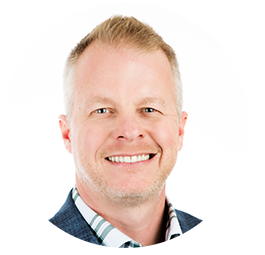 Rick Gillespie,
Rick Gillespie,
Senior Vice President North America, REGENESIS and Land Science
Rick Gillespie serves as Senior Vice President North America for REGENESIS and Land Science. In his role, he directs a team of scientists and engineers focused on vapor intrusion mitigation and environmental remediation at a wide variety of contaminated sites. Rick works closely with state regulators, environmental consultants, property owners, and passive barrier applicators on vapor intrusion mitigation projects across North America. He has conducted numerous vapor intrusion training courses and has an excellent reputation for communicating technical content to an audience with a diverse technical background. His career focuses on innovative remediation technologies to treat chlorinated solvents, petroleum hydrocarbons, and emerging contaminants in soils and groundwater. He was a co-author on the ‘Multi-Site Air Sparging Design Paradigm’ and contributed to the publication ‘Principles and Practices of Enhanced Anaerobic Bioremediation of Chlorinated Solvents. Mr. Gillespie earned his B.S. in Environmental Science from the University of Oklahoma.
Land Science is a division of REGENESIS Inc. in the USA. For more information on Land Science and its vapour intrusion mitigation products, please visit landscience.com
Watch webinar recording
PetroFix – Pre-treatment of tank and pipe bedding to prevent future impact
Presenter: Jack Shore
Language: English
In the third and final webinar in the series ‘New treatment options for petroleum hydrocarbon impacted sites’, Jack Shore explains how PetroFix® is being used to pre-coat aggregate used in utility corridors and around Underground Storage Tanks (USTs). This creates underground activated carbon filters to reduce the impact of future losses, minimise mobilisation and suppress the formation of vapours. This approach is widely applicable on petrol filling stations, pipelines and industrial sites.
This webinar covers:
- Practical application through spray or injection
- Treatment mechanisms of PetroFix
- Examples of UST pre-treatment and service corridor treatment to prevent recontamination
- Limitations of use
About the presenter:
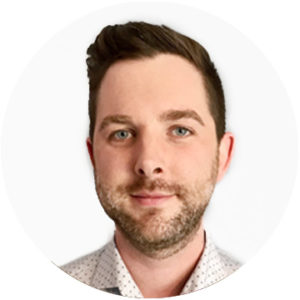
Jack Shore
Senior District Manager | REGENESIS
Jack is the Colloidal Carbon Technologies Lead for REGENESIS in Europe, as well as in charge of the UK and Scandinavian districts within the company. As part of these roles, he manages a team providing technical support and design work to a mix of Design and Build Consultancies, Remediation Contractors and Blue-Chip Clients. Jack has over 12 years of experience within the remediation industry and most recently has successfully implemented the first injection of PlumeStop to effectively stabilise a PFAS plume in the EU. His experience ranges from supervising site investigations, developing in situ remediation designs, and managing large-scale remediation projects with multiple stakeholders.
Watch webinar recording
In Situ Permeable Reactive Barriers using PetroFix: A quick, simple and safe solution
Presenter: Jack Shore
Language: English
In this second webinar in our series ‘New treatment options for petroleum hydrocarbon impacted sites’, we take a closer look at how PetroFix is being used to create in situ permeable reactive barriers (I-PRB’s). These are being deployed to prevent offsite contaminant migration on brownfield development, construction and active industrial sites. Across Europe, over one kilometre of I-PRB’s have been installed using PetroFix. Jack Shore discusses why construction companies are keen on replacing complex cut-off walls with this simple approach.
Webinar highlights:
- How PetroFix I-PRBs reduce off-site liability
- The site characterisation required to install an effective I-PRB
- Injection and installation approaches
- Cost and programme savings of I-PRBs
- Examples of installations on site
About the presenter:

Jack Shore
Senior District Manager | REGENESIS
Jack is the Colloidal Carbon Technologies Lead for REGENESIS in Europe, as well as in charge of the UK and Scandinavian districts within the company. As part of these roles, he manages a team providing technical support and design work to a mix of Design and Build Consultancies, Remediation Contractors and Blue-Chip Clients. Jack has over 12 years of experience within the remediation industry and most recently has successfully implemented the first injection of PlumeStop to effectively stabilise a PFAS plume in the EU. His experience ranges from supervising site investigations, developing in situ remediation designs, and managing large-scale remediation projects with multiple stakeholders.
Watch webinar recording
Subsurface oil spill response using PetroFix
Presenter: Jack Shore
Language: English
This is the first webinar in a short series titled: ‘New treatment options for petroleum hydrocarbon impacted sites’. This webinar focuses on the use of PetroFix as part of an oil spill response programme. Presenter Jack Shore introduces the remediation processes employed by PetroFix. He discusses application methods and gives examples of sites where oil spill response companies are using PetroFix, as part of their oil spill response approach.
PetroFix is being used to immediately limit the ability of dissolved contamination to impact downgradient properties, target residual contaminant mass, prevent vapour issues under properties and to minimise or avoid future remediation activities.
This webinar covers:
- The treatment mechanisms underpinning PetroFix
- Practical application tips and mixing
- Where PetroFix can fit as part of an oil spill response programme
- Limitations of use
About the presenter:
 Jack Shore
Jack Shore
Senior District Manager | REGENESIS
Jack is the Colloidal Carbon Technologies Lead for REGENESIS in Europe, as well as in charge of the UK and Scandinavian districts within the company. As part of these roles, he manages a team providing technical support and design work to a mix of Design and Build Consultancies, Remediation Contractors and Blue-Chip Clients. Jack has over 12 years of experience within the remediation industry and most recently has successfully implemented the first injection of PlumeStop to effectively stabilise a PFAS plume in the EU. His experience ranges from supervising site investigations, developing in situ remediation designs, and managing large-scale remediation projects with multiple stakeholders.
Watch webinar recording
PFAS Regulations Over Space and Time
In this webinar we were pleased to have as a special guest speaker Rosa Gwinn, PhD PG, Global PFAS Technical Lead at AECOM. Dr. Gwinn’s presentation looked at where PFAS regulations started and where they may be headed globally, including the United States. She was joined by Scott Wilson, President & CEO at REGENESIS, who shared the latest developments about colloidal activated carbon’s use in the remediation industry as a low-cost method of eliminating PFAS risk.
Highlights of this free webinar:
- Where PFAS regulations started and where they may be headed globally, including the United States
- A brief explanation of how public health concerns about PFAS created the pressure to drive regulatory actions that differed country-by-country and state-by-state
- How public health interest and research funding are rapidly changing the scientific understanding of the behavior, toxicity, and fate of individual PFAS in the environment
- Predicting the future of regulations based on what has happened in different jurisdictions
- An update on the use of PlumeStop to eliminate risk on PFAS sites globally

 Americas
Americas Europe
Europe Français
Français Deutsch
Deutsch Italiano
Italiano Español
Español